Belgian designers turn to the soil for a sensory story in Milan
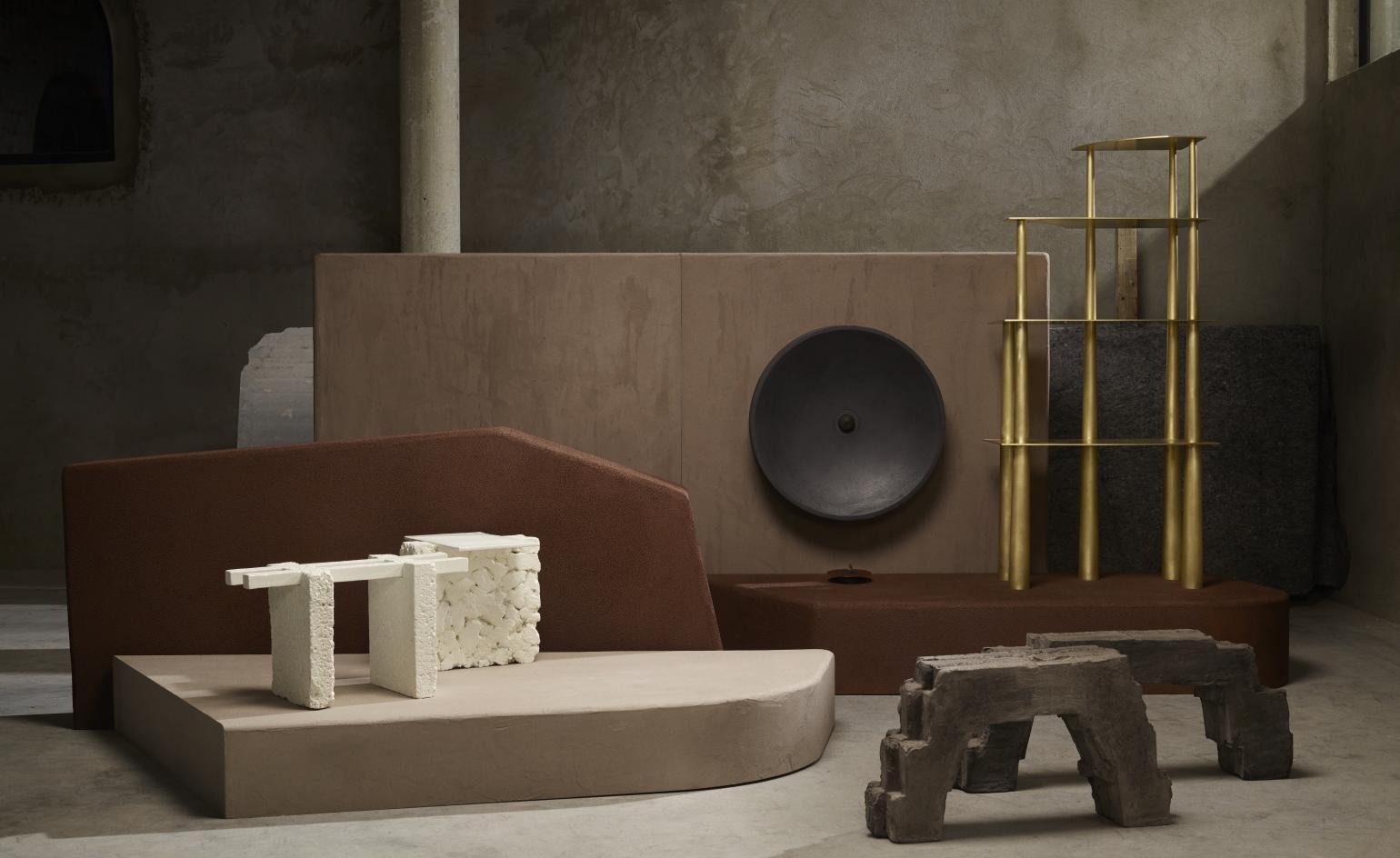
When Brut, a Belgian collective of emerging designers bound by shared aesthetics, presented their concerted scenography at Milan’s Salone del Mobile last year, they were met with much interest. ‘Despite our location just outside the busy Isola, we had a really great natural selection of visitors who came expressly for us,’ says Linde Freya Tangelder, a founding member who is also one of Brut’s four participants for this year’s iteration.
One of those eager visitors was Antoine, a Belgian company specialised in verisimilar, textured architectural finishes. ‘We share a sensory approach’, explains Charlotte Jonckheer, another Brut member. Brut and Antoine’s similar sensibility led to their collaboration on all materials and on the scenography for this year’s presentation at Salone del Mobile, titled ‘Bodem’, Dutch for soil. ‘Last year, we worked around charcoal, but this time we looked towards soil, which required a softer and warmer approach that Antoine could offer.
More specifically, they considered the treasure-rich soil of Tongeren, the location of Belgium’s oldest Gallo-Roman settlement. ‘We initially had the idea to look at raw materials and construction materials there,’ says Tangelder. ‘We were then drawn to the finds excavated on this archeological site; like utensils and frescos. We scoured through boxes and boxes in the archive that contained objects from the Roman Era as well as the Middle Ages.’
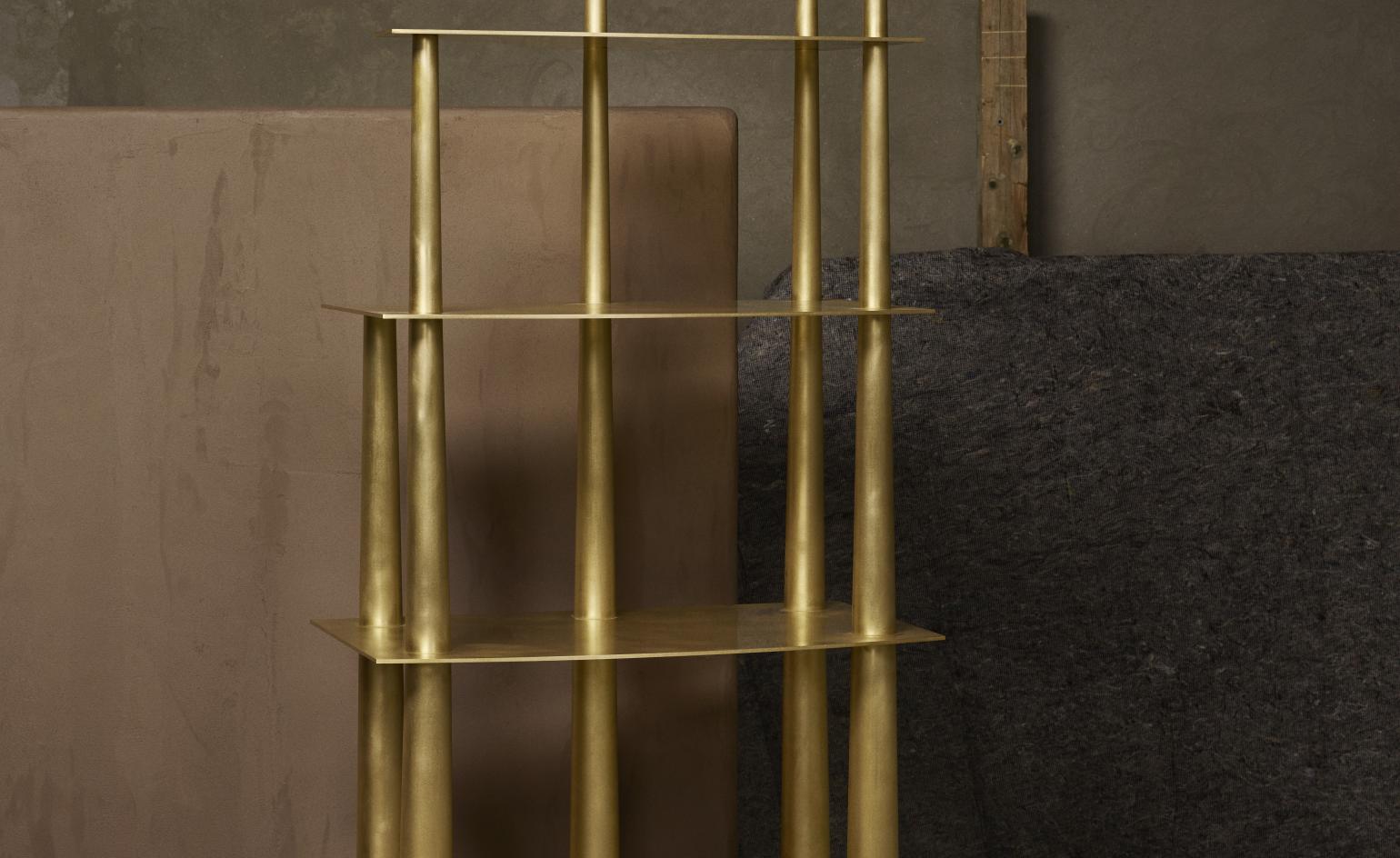
Design by Linde Freya Tangelder
The museum where they conducted their research, Teseum, is located within a basilica at the highest point of the city – itself a structure built upon the ruins and foundations of seven prior church structures.
‘It’s here that we were drawn to the layered characteristics of soil,’ says Jonckheer. Often, the Roman layer was pulverised to make mortar, for example. We were interested in the stratification of the soil, which in turn inspired our scenography for Salone.’ One of Brut’s strengths is that they contextualise the objects they design within a scenography, reinforcing the aesthetics of each individual designer.
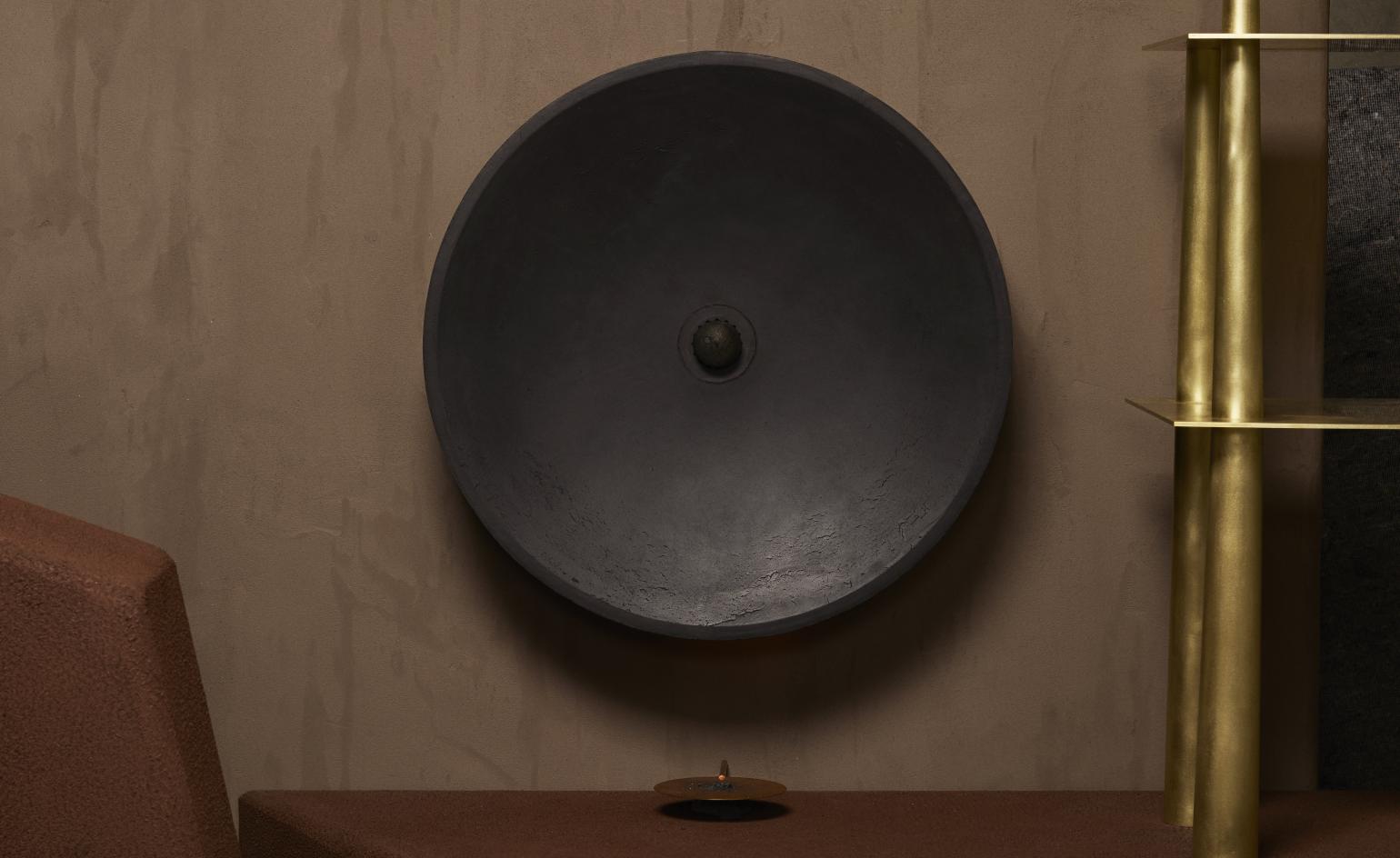
Design by Nel Verbeke
The negative shapes, which the Roman foundations take on while being excavated, provided the basis for the scenography ‘Bodem’. The show will be presented at Studio Maraniello, a white cube gallery that contrasts strongly with the earthy tones of their thematic scenography in which each of the four participants present two objects.
On the nuanced clay and chalk-coloured plinths, Nel Verbeke shows tall vases made of a Jesmonite and earth mixture, a poetic translation of the amount of rain fallen during a defined period of time and specific place. Reflecting Jonckheer offers a hand-knotted carpet inspired by effect of the wind’s movement on the soil. Bram Vanderbeke continues the fascination with negative shapes through his textured concrete structures, while Tangelder experiments further with brick as an end product, incorporated as a backrest into an aluminium chair.
‘For this edition, we focused even more on the whole as a practically implementable part of the presentation,’ says Jonckheer. ‘Sometimes objects are presented by an outside party, in a decontextualised way – we take control of the story and the context, which seems to intrigue.’
INFORMATION
Bodem is on view 9-14 April. For more information, visit the Brut website and the Antoine website
ADDRESS VIEW GOOGLE MAPS
Bodem
Studio Maraniello
Viale Stelvio, 66
Receive our daily digest of inspiration, escapism and design stories from around the world direct to your inbox.
Siska Lyssens has contributed to Wallpaper* since 2014, covering design in all its forms – from interiors to architecture and fashion. Now living in the U.S. after spending almost a decade in London, the Belgian journalist puts her creative branding cap on for various clients when not contributing to Wallpaper* or T Magazine.
-
 ‘I want to bring anxiety to the surface': Shannon Cartier Lucy on her unsettling works
‘I want to bring anxiety to the surface': Shannon Cartier Lucy on her unsettling worksIn an exhibition at Soft Opening, London, Shannon Cartier Lucy revisits childhood memories
-
 What one writer learnt in 2025 through exploring the ‘intimate, familiar’ wardrobes of ten friends
What one writer learnt in 2025 through exploring the ‘intimate, familiar’ wardrobes of ten friendsInspired by artist Sophie Calle, Colleen Kelsey’s ‘Wearing It Out’ sees the writer ask ten friends to tell the stories behind their most precious garments – from a wedding dress ordered on a whim to a pair of Prada Mary Janes
-
 Year in review: 2025’s top ten cars chosen by transport editor Jonathan Bell
Year in review: 2025’s top ten cars chosen by transport editor Jonathan BellWhat were our chosen conveyances in 2025? These ten cars impressed, either through their look and feel, style, sophistication or all-round practicality
-
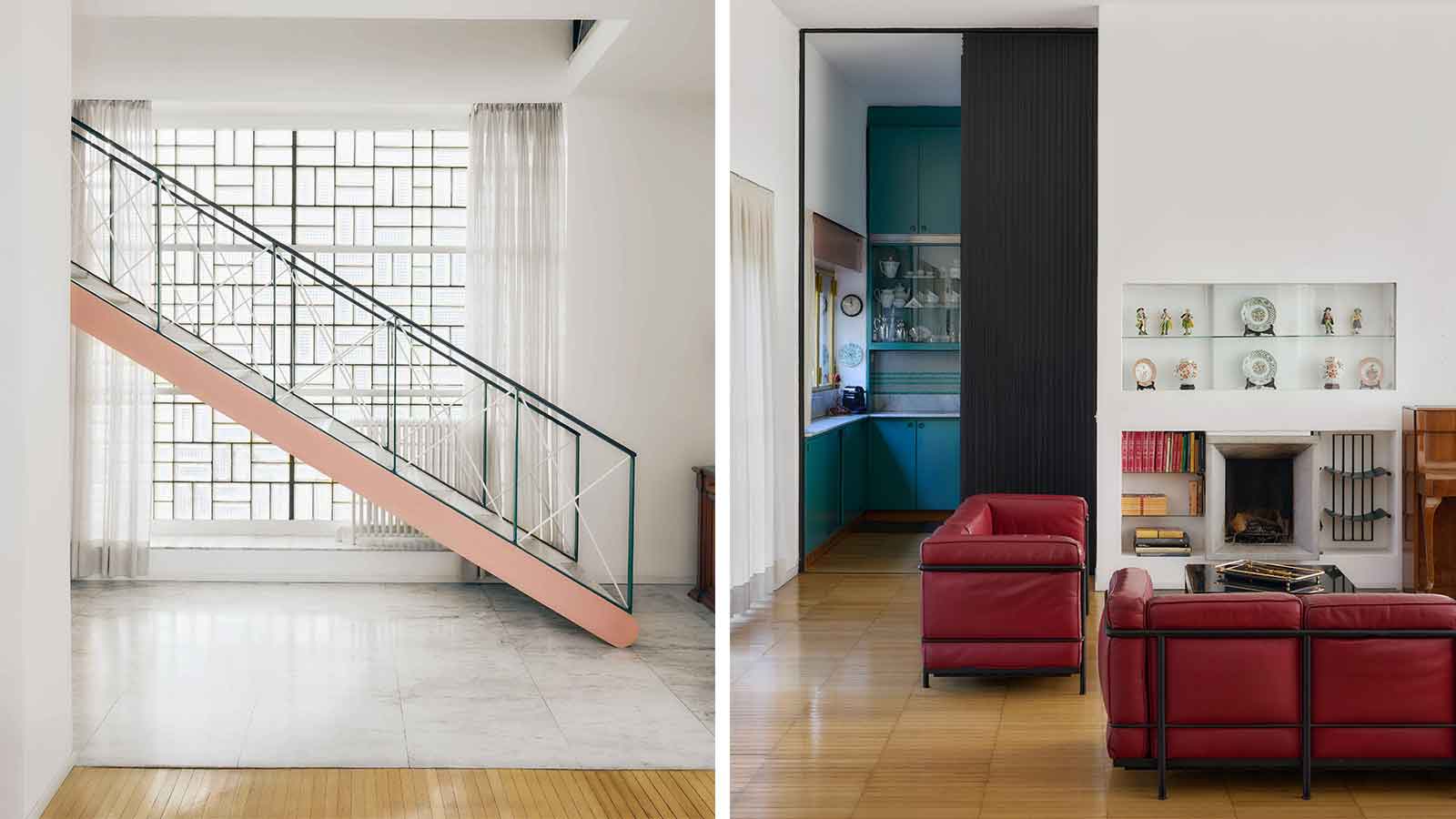 Alcova 2026 locations include a Rationalist gem and an abandoned church
Alcova 2026 locations include a Rationalist gem and an abandoned churchAlcova returns for an 11th edition in 2026 (20-26 April), once again opening up two exclusive Milanese locations, the Baggio Military Hospital and Franco Albini's Villa Pestarini
-
 O Milano! Design's epic annual spectacle in photos
O Milano! Design's epic annual spectacle in photosCall us biased, but we believe that Milan Design Week is, at this moment in time, the greatest show on earth
-
 For its 24th edition, Triennale Milano's International Exhibition examines the theme of ‘Inequality’
For its 24th edition, Triennale Milano's International Exhibition examines the theme of ‘Inequality’The design institution shines a light on events such as the Grenfell disaster, climate crises and the Israel-Hamas war through architecture, art, products, technology and data
-
 Eight designers to know from Rossana Orlandi Gallery’s Milan Design Week 2025 exhibition
Eight designers to know from Rossana Orlandi Gallery’s Milan Design Week 2025 exhibitionWallpaper’s highlights from the mega-exhibition at Rossana Orlandi Gallery include some of the most compelling names in design today
-
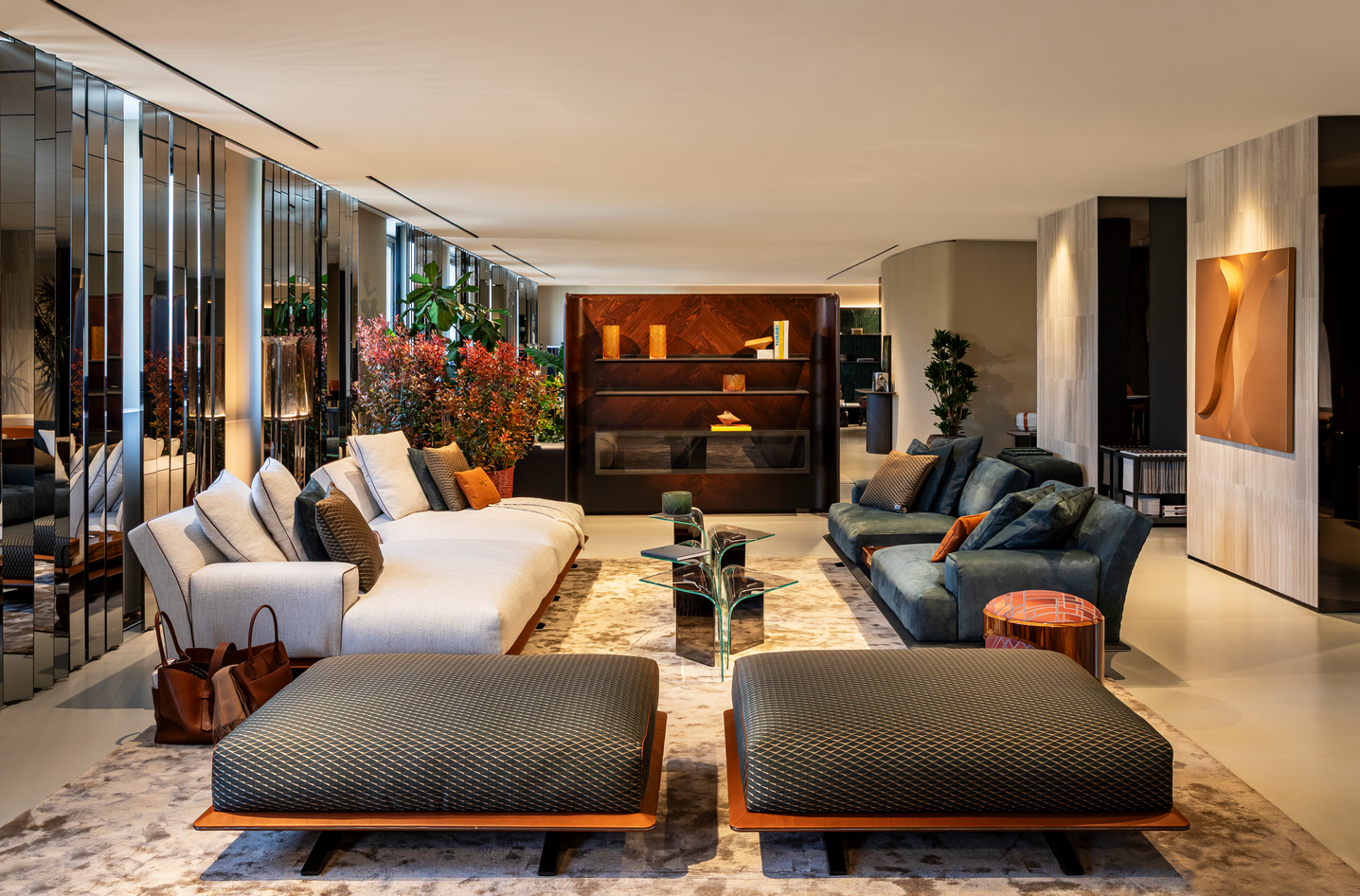 Bentley’s new home collections bring the ‘potency’ of its cars to Milan Design Week
Bentley’s new home collections bring the ‘potency’ of its cars to Milan Design WeekNew furniture, accessories and picnic pieces from Bentley Home take cues from the bold lines and smooth curves of Bentley Motors
-
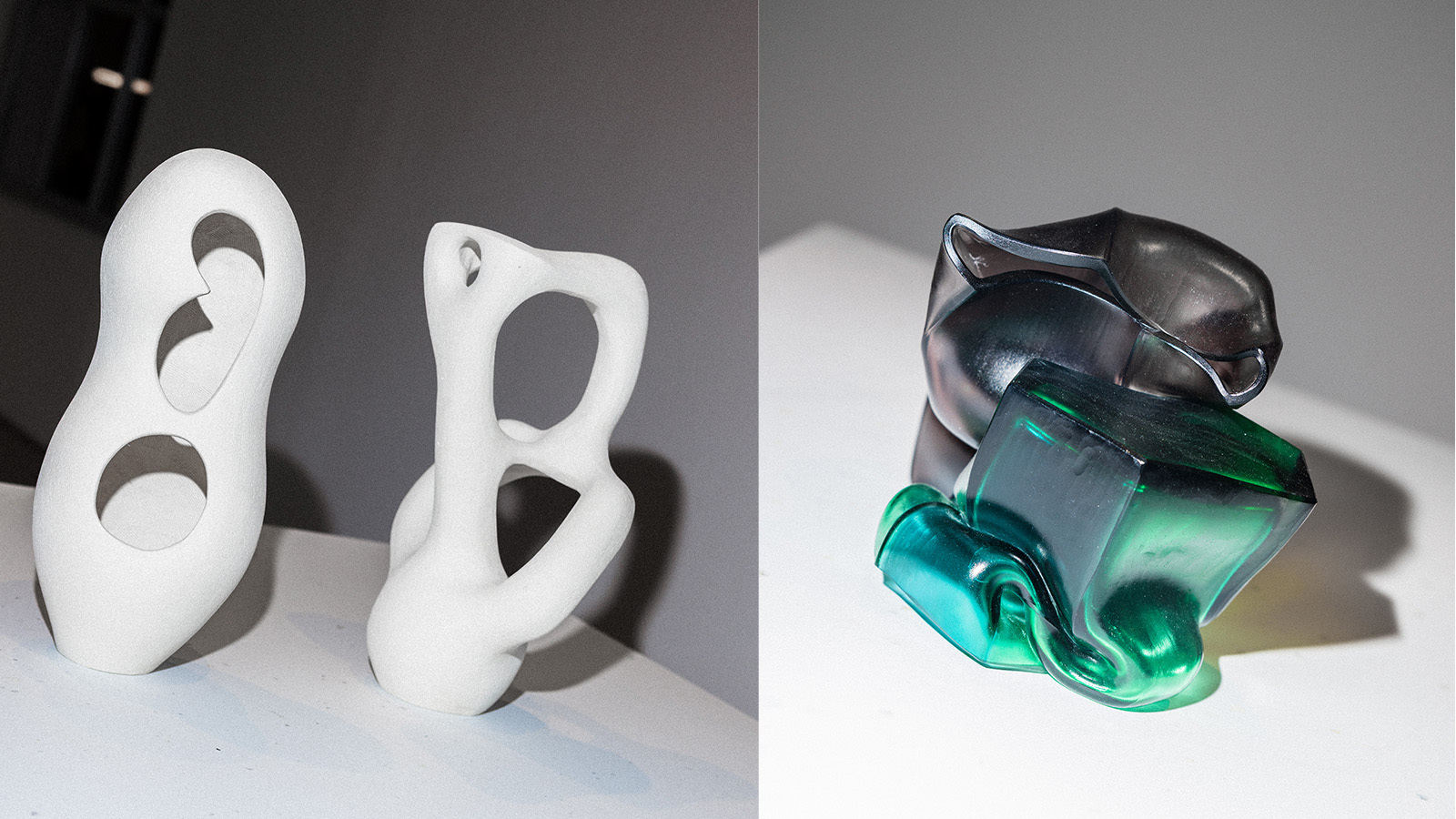 StoneX partners with Wallpaper* for material alchemy at Milan Design Week and beyond
StoneX partners with Wallpaper* for material alchemy at Milan Design Week and beyondThe natural stone purveyor teams up with Wallpaper* for a three-year partnership of material adventures, starting with an exhibition at Triennale di Milano
-
 David Rockwell’s Milan Design Week presentation is a love letter to cork
David Rockwell’s Milan Design Week presentation is a love letter to corkRockwell Group’s Casa Cork installation showcases this under-appreciated material, which is infinitely recyclable and sequesters carbon for decades
-
 Emerging galleries to discover during Milan Design Week
Emerging galleries to discover during Milan Design WeekWallpaper’s Milan editor has the inside track on the younger design galleries coming to town